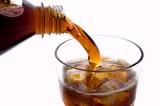By Caroline Scott-Thomas 24-Apr-2013
Children from different cultures prefer different levels of fat and sweetness in foods and drinks, suggests new research that calls into question the idea that all children are predisposed to fatty and sugary tastes.
 |
Preference for sweet and fatty foods
may depend more on culture
and age than other factors
|
In a study published in Food Quality and Preference, researchers examined the taste preferences of 1705 children aged 6 to 9 in survey centres in Italy, Estonia, Cyprus, Belgium, Sweden, Germany, Hungary, and Spain. Using paired comparison tests, the children rated their preference for varying levels of sugar in apple juice, and fat, salt and monosodium glutamate content in crackers.
They found that differences in culture and age were most strongly correlated with children’s preferences for different levels of fat and sugar.
"The results were surprising,” said study co-author Silvia Bel-Serrat, of the University of Zaragoza. "Although we often tend to think that children share a common predisposition towards fats and sugar, we observed that the preferences of children from different countries were not at all similar."
The researchers said that the results could be important for EU-wide dietary policy-setting.
Lead author Anne Lanfer of the Institute for Prevention Research and Epidemiology in Bremen, Germany said: “There is a tendency to undertake uniform dietary prevention programmes across European countries. However, flavour preferences vary from one country to another and the same programme will not be equally effective in all countries.”
The researchers examined a number of factors as potentially influential for flavour preference, including age, sex, parental education, early feeding practices, TV viewing, use of food as a reward, and taste threshold sensitivity – that is, the concentration at which the children could taste bitter, sour, sweet, salty, and umami flavours.
They found that the older children tended to prefer sugary and salty flavours, with a 34% increase in the odds for sweet preference and a 29% increase in the odds for salt preference for each additional year of age. Factors other than age and culture were not found significantly to influence children’s preferences.









